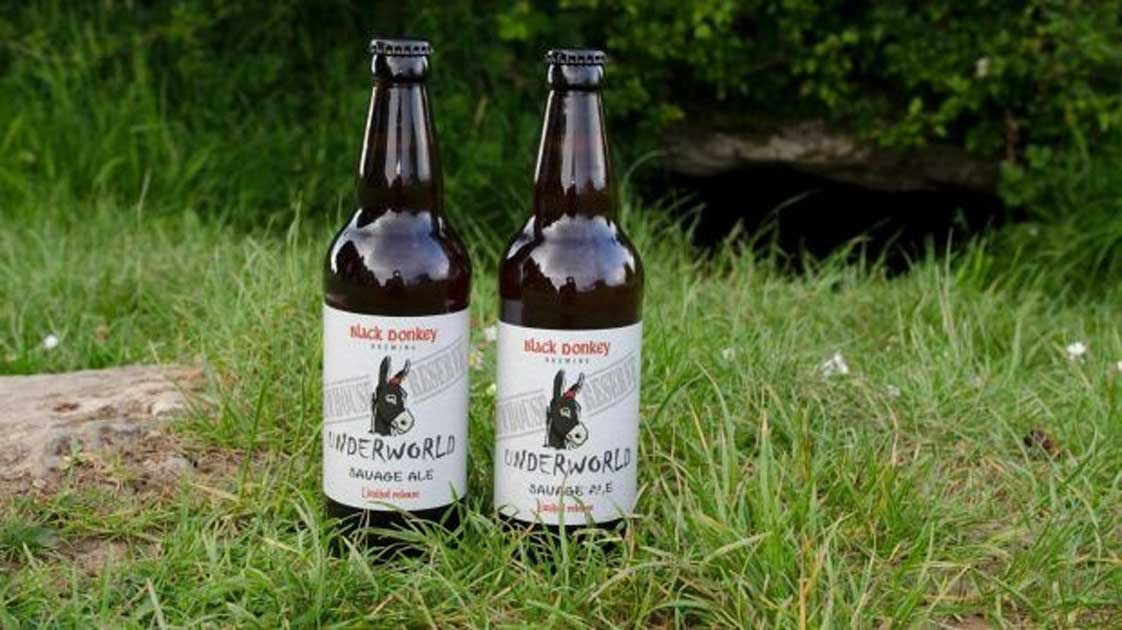An Ancient Irish Cave Gives Birth to a Fine Brew
In an ancient cave known locally as the “gateway to the underworld,” located near the village of Tulsk, Co. Roscommon, where legends tell of the birth of Queen Medb of Connacht, a team of scientists led by Richard Siberry, the owner of Black Donkey brewery, has gathered innovative new ingredients for an entirely new beer.
According to an article in the Irish Times, microbiologists left “wort swabs in the walls and vegetation of the cave” from which they aimed to grow and isolate native Irish yeast strains “into suitable ones for brewing.” To get ‘suitable yeast strains’, the Black Donkey brewery team and the Rathcroghan Visitor Centre formed a joint team which became known as “The Wild Yeast Chase Project” which was funded by Enterprise Ireland in conjunction with Micra Biodiagnostics and Tallaght IT.

Queen Maev. ( Public Domain )
Richard Siberry told reporters that to get into the cave you have to “slide in on your back…” and being a bit claustrophobic, Silberry said he was “certainly out of my comfort zone, but it was all in the name of good beer.” The scientists eventually succeeded in harvesting and propagating a yeast strain from “a blackberry bush just above the cave’s entrance” for use in making beer by Black Donkey brewery. It was named ‘Morrigan Strain 1’ after the Irish goddess believed to have once resided in the cave.
- A Drink Fit for Goddesses: Beer and Mankind in Ancient Mythology
- The Bewitching Tale of Morgan le Fay, a Captivating Character of Arthurian Legend
- Howling Against the Moon: The Last Wolves of Ireland

Oweynagat known as “Cave of the cats” Roscommon, Ireland (Image: amayodruid)
Ancient Brews
Chemical tests of ancient pots in what is today Iran tells archaeologists that fermentation was used to make beer as far back as around 7,000 years ago. According to a paper by the University of Pennsylvania Museum of Archaeology and Anthropology, the earliest ‘chemically confirmed’ barley beer was discovered at Godin Tepe in the central Zagros Mountains of Iran, where jug fragments dating from between 5400 and 5000 years ago were found coated with residues of beerstone, a by-product of the beer brewing process.
To get to the origins of ale making in prehistoric Europe one has to go back to the dawn of farming in the Neolithic period. According to a BBC report, at a 1980s archaeological dig at Kinloch on the Isle of Rhum, in the Outer Hebrides, a residue was discovered inside pottery remains dating back to about 2000 BC. The results of microscopic analysis detected pollen grains, which suggested “high levels of heather, and some meadowsweet and royal fern” which are all used in making beer.

Ingredients of beer in the ancient brewery of Le Cateau Cambrésis, France. (CC BY-SA 3.0)
Traces of beer ingredients were also found in Neolithic beakers at Aberdeenshire and Fife and “heat-crazed stones and large pots” found at Skara Brae Neolithic village on the Orkney islands, north-east of Scotland, dating back to 3000 BC. Local archaeologist Merryn Dineley believes that the pottery at Skara Brae was once used for heating malt, “the germinated and heated cereal grains that ferment to produce alcohol.”
Something a Bit Stronger
Evidence suggests Neolithic man liked a proper ‘punch in his pint’ for in the brew at Skara Brae scientists also discovered “henbane, hemlock, meadowsweet, and nightshade.” Henbane causes optical illusions and feelings of weightlessness and flight and for these properties it was a common component in witches' flying potions. Nightshade, or Belladonna, induced delirious hallucinations and was administered to women accused of being witches during the medieval Inquisition, to coax them into confessing.
- Archaeologist attempts to revive lost alcoholic beverages from ancient recipes and residues
- Archaeologists discover a prehistoric brewery in China dating back 5,000 years
Beer and Dating Difficulties
However, ‘conclusively establishing’ that alcohol was brewed and drunk as far back as the Neolithic is “extraordinarily difficult if not almost impossible,” according to Jessica Smyth, an archaeologist and chemist at University College Dublin. Smyth told reporters at The BBC that the “chemical analysis of residues can never provide complete proof that an alcoholic beverage was once held in a vessel.” Furthermore, she added, “Consider calcium oxalate, which is often cited as evidence for alcohol because it is a by-product of the brewing process. "Mineral salts are extremely common," said Smyth. "You just can't say that that is definitely part of an ancient brewing process.”
Today, the brewing industry has become a global business, dominated by a handful of multinational companies and hundreds of thousands of smaller producers ranging from brewpubs to microbreweries. A Research And Markets report recently published that “more than 133 billion liters (35 billion gallons) of beer are sold per year producing total global revenues of $294.5 billion (£147.7 billion) in 2006.”
What is inspirational in all this, is that to get a slice of the £147.7 billion pie, an enterprising guy from Ireland, Richard Siberry, got his finger out and put together a team of scientists, funding bodies and food and drink associations, then crawled into a cave to get the edge on his competition.
Now that, is enterprising, and deserves a pint!
Top image: Black Donkey’s Underworld Ale. Source: Irish Times
By Ashley Cowie

















